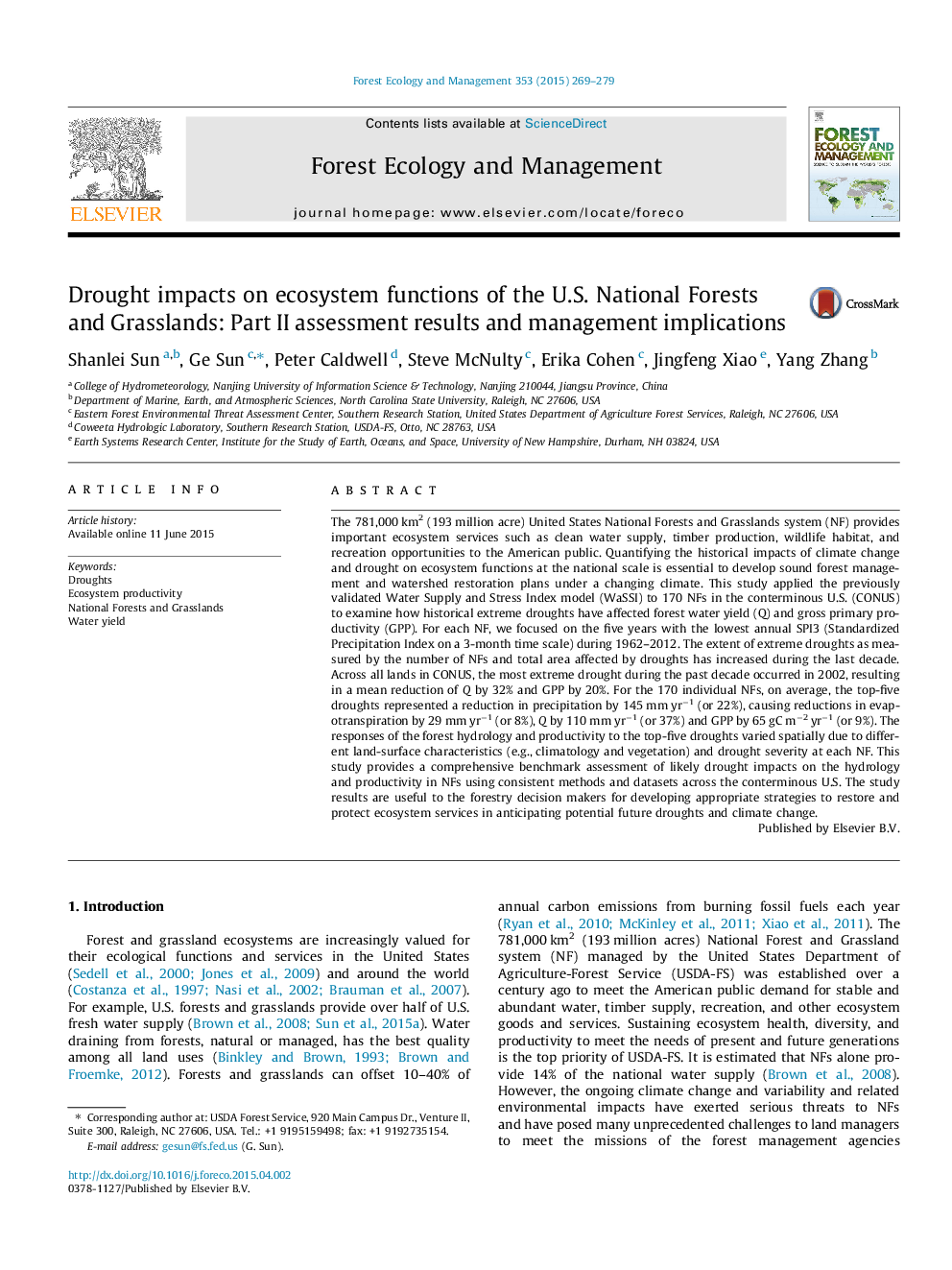| کد مقاله | کد نشریه | سال انتشار | مقاله انگلیسی | نسخه تمام متن |
|---|---|---|---|---|
| 86238 | 159172 | 2015 | 11 صفحه PDF | دانلود رایگان |
• Validated a water balance model with both hydrology and productivity data.
• Examined drought impacts on 170 U.S. National Forests and Grasslands (NFs).
• The NFs experienced increasing number of severe droughts in the past five decades.
• Severe droughts reduced water yield, ET, and productivity in NFs across CONUS.
The 781,000 km2 (193 million acre) United States National Forests and Grasslands system (NF) provides important ecosystem services such as clean water supply, timber production, wildlife habitat, and recreation opportunities to the American public. Quantifying the historical impacts of climate change and drought on ecosystem functions at the national scale is essential to develop sound forest management and watershed restoration plans under a changing climate. This study applied the previously validated Water Supply and Stress Index model (WaSSI) to 170 NFs in the conterminous U.S. (CONUS) to examine how historical extreme droughts have affected forest water yield (Q) and gross primary productivity (GPP). For each NF, we focused on the five years with the lowest annual SPI3 (Standardized Precipitation Index on a 3-month time scale) during 1962–2012. The extent of extreme droughts as measured by the number of NFs and total area affected by droughts has increased during the last decade. Across all lands in CONUS, the most extreme drought during the past decade occurred in 2002, resulting in a mean reduction of Q by 32% and GPP by 20%. For the 170 individual NFs, on average, the top-five droughts represented a reduction in precipitation by 145 mm yr−1 (or 22%), causing reductions in evapotranspiration by 29 mm yr−1 (or 8%), Q by 110 mm yr−1 (or 37%) and GPP by 65 gC m−2 yr−1 (or 9%). The responses of the forest hydrology and productivity to the top-five droughts varied spatially due to different land-surface characteristics (e.g., climatology and vegetation) and drought severity at each NF. This study provides a comprehensive benchmark assessment of likely drought impacts on the hydrology and productivity in NFs using consistent methods and datasets across the conterminous U.S. The study results are useful to the forestry decision makers for developing appropriate strategies to restore and protect ecosystem services in anticipating potential future droughts and climate change.
Journal: Forest Ecology and Management - Volume 353, 1 October 2015, Pages 269–279
